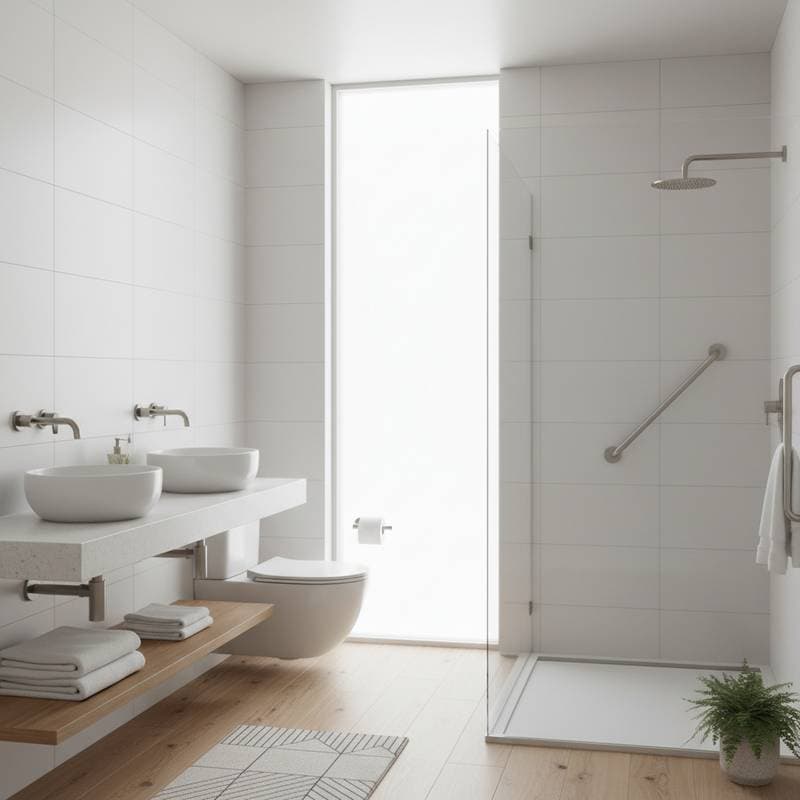Tile vs Luxury Vinyl: 2025 Resale Value Showdown
Homeowners frequently weigh style, comfort, and financial implications when upgrading their living spaces. A key decision involves selecting between tile and luxury vinyl flooring to enhance resale value. Both options have advanced significantly in aesthetics, durability, and affordability. The choice affects not only daily enjoyment but also marketability to potential buyers.
This analysis examines performance in investment potential, upkeep requirements, and visual allure. Readers gain insights to select the option that aligns with their priorities and local real estate trends.
The Case for Tile Flooring
Tile remains a staple choice due to its robust construction and elegant appearance. Crafted from ceramic or porcelain, it withstands moisture, temperature fluctuations, and intensive foot traffic. These qualities position tile as a top selection for kitchens, bathrooms, and hallways.
Key Benefits
- Longevity: Properly installed tile endures for 50 years or more. It resists scratches, impacts, and color loss over time.
- Style Variety: Options span numerous hues, textures, and layouts, from subway patterns to intricate mosaics, to complement diverse decor schemes.
- Water Resistance: Tile repels liquids effectively, minimizing risks of warping or mold in humid environments. Routine wiping suffices for surface cleaning.
- Resale Appeal: Buyers view tile as a marker of premium craftsmanship, particularly in visible, high-use zones, which elevates perceived home quality.
Drawbacks to Consider
- Cold Underfoot: The rigid surface transmits chill, potentially deterring those who prefer warmer floors without added rugs or heating systems.
- Installation Cost: Expert fitting is essential for level results, often adding substantial expenses beyond material prices.
- Grout Upkeep: Joints demand periodic scrubbing and resealing to avoid staining, cracking, or microbial growth.
Tile shines in endurance and enduring worth, yet demands greater upfront and ongoing effort.
Comparing Resale Value and Return on Investment
Flooring impacts resale hinge on alignment with regional buyer preferences and home demographics. Well-chosen and preserved installations of either type elevate property worth.
Tile ROI Highlights
- Tile draws purchasers who prioritize resilience and classic elegance.
- Its extended service life reduces the need for pre-sale replacements, preserving investment integrity.
- Returns materialize through minimal wear and sustained market desirability, often recouping 70 to 90 percent of costs in upscale areas.
Luxury Vinyl Plank ROI Highlights
- Luxury vinyl plank (LVP) appeals to those valuing contemporary aesthetics and user-friendly features.
- It provides excellent value relative to expense, ideal for homes in the $300,000 to $600,000 range.
- Returns increase via simplified care routines and versatile designs that suit broad tastes, with seamless whole-home applications fetching higher offers.
The superior resale edge varies by context. Tile holds precedence in high-end locales where opulence matters. In suburban or practical settings, LVP's inviting texture and ease win favor among families.
To assess local fit, review recent sales data from comparable properties. Factor in buyer surveys indicating preferences for low-maintenance options in fast-paced households.
Budget-Friendly Solutions
For tile-like visuals on a tighter budget, luxury vinyl tile (LVT) replicates natural stone or wood grains with vinyl's pliability. This hybrid delivers the sought-after pattern without porcelain's rigidity.
Strategic placement maximizes efficiency: Reserve tile for moisture-prone spots like showers or laundries, pairing it with LVP in living areas. Such zoning achieves cohesive flow while controlling expenditures.
Allocate funds wisely for essentials like moisture barriers, transition strips, and skilled labor where precision counts. These elements ensure a professional finish that enhances overall home cohesion and buyer confidence.
Homeowner Essentials
Difficulty Level: Beginner to Intermediate
Tools Needed: Utility knife, tape measure, spacers, straight edge; for tile, add a wet saw or tile cutter and grout float
When to DIY: Tackle LVP in compact spaces or flat subfloors with minimal transitions
When to Call a Professional: Opt for experts on tile layouts, expansive LVP installs, or uneven base preparations
Estimated Costs: LVP averages $3 to $7 per square foot installed; tile ranges from $5 to $15, escalating with labor and premium selections
Maintaining Your Investment
Regular attention safeguards flooring integrity and bolsters resale prospects.
For tile, sweep debris daily and mop with pH-neutral solutions weekly. Reseal grout annually in high-moisture zones to fortify barriers against infiltration.
For LVP, position door mats to trap dirt and apply protective pads beneath furniture legs. Clean spills promptly with damp cloths and mild soap to prevent adhesive degradation.
Stockpile spare materials matching your install for quick fixes. Pristine conditions signal meticulous ownership, influencing offers positively during inspections.
Steps to Maximize Flooring Returns
Evaluate your timeline in the property, targeted rooms, and neighborhood trends before deciding. Consult real estate agents for data on flooring influences in recent transactions.
Test samples in your lighting to confirm harmony with existing elements. Proceed with installations that promise both immediate satisfaction and future financial gains.



